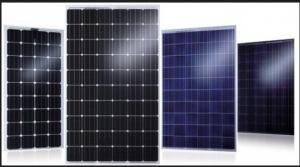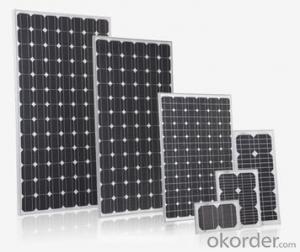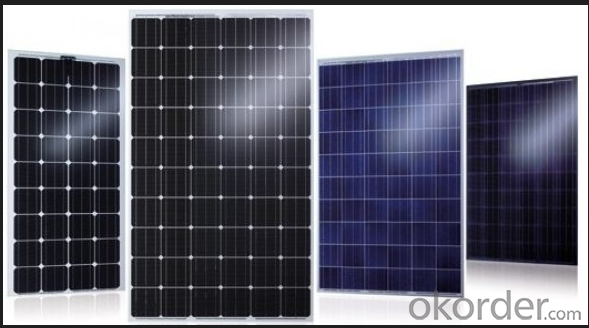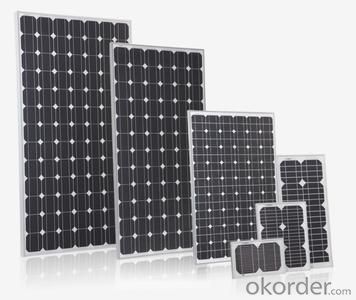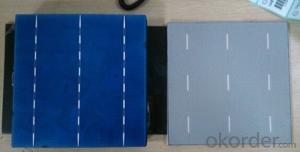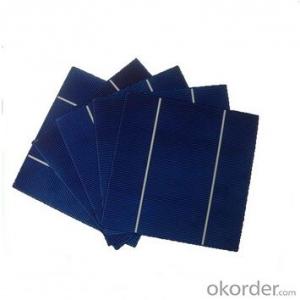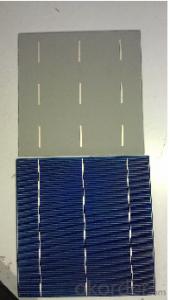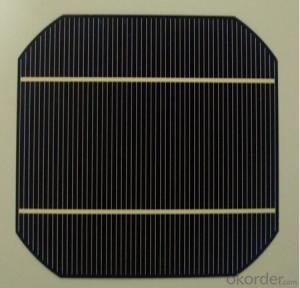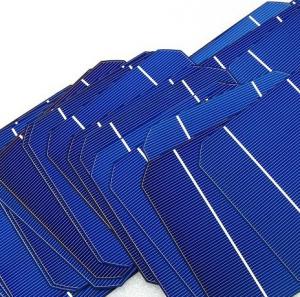Triple Junction Silicon Solar Cell 156mm*156mm with Different Efficiency
- Loading Port:
- China main port
- Payment Terms:
- TT or LC
- Min Order Qty:
- 100 m.t.
- Supply Capability:
- 10000000 m.t./month
OKorder Service Pledge
OKorder Financial Service
You Might Also Like
Description:
CNBM Solar is a world-leading and Vertical integrated manufacturer of high-performance with Silicon,
Wafer, Cells, Modules, which convert sunlight into electricity for residential, commercial, and utility-scale
power generation.
The capacity of CNBMSolar is reach to 1GW, and make sure each year our shipment capacity is more
Than 700-800MWs, at the same time, we have set up the largest solar power station with our partner
in Ukraine.
CNBM is a Quality + Service oriented company with“Excellence at Each Step” approach, composed of
the finest components from TUV and IEC-certified partners around the world, CNBM modules consistently
undergo a variety of trials at the company’s Test & Development Centre, ensuring peak performance
capabilities. The company is committed to develop and provide the world with clean and renewable energy
to ease the energy shortages as well as human kind’s impact on the environment.
Packaging & Delivery
| Packaging Detail: | Typical package for one carton contains 1,200 cells.The cells are sealed in cell box every 100pcs.Gross weight peri unit carton shall be around 17.1Kg. |
| Delivery Detail: | Within 1-2days after received payment |
Specifications
*High efficiency and High power
*Long-term electrical stability
*Best quality
*fast ship
156mm Multi-Crystalline Silicon Solar Cell low price, high efficiency for solar panels/ modules
PHYSICAL
Dimension: 156mm x 156mm ± 0.5mm
TYPICAL ELECTRICAL CHARACTERISTICS
| Efficiency | 1640 | 1660 | 1680 | 1700 | 1720 | 1740 | 1760 |
| Efficiency(min)% | 16.4 | 16.6 | 16.8 | 17.0 | 17.2 | 17.4 | 17.6 |
| Pmax(W) | 3.991 | 4.040 | 4.088 | 4.137 | 4.186 | 4.234 | 4.283 |
| Voc(V) | 0.623 | 0.626 | 0.629 | 0.631 | 0.633 | 0.635 | 0.637 |
| Isc(A) | 8.412 | 8.455 | 8.506 | 8.557 | 8.602 | 8.643 | 8.681 |
| Vmp(v) | 0.515 | 0.517 | 0.520 | 0.522 | 0.524 | 0.526 | 0.527 |
| Imp(A) | 7.750 | 7.814 | 7.862 | 7.926 | 7.988 | 8.050 | 8.127 |
*Data under standard testing conditional (STC):1,000w/m2,AM1.5, 25°C , Pmax:Positive power tolerance.
TYPICAL TEMPERATURE Voltage -2.14 mV/K
COEFFICIENTS Current +4.93 mA/K
Power -0.43 %/K
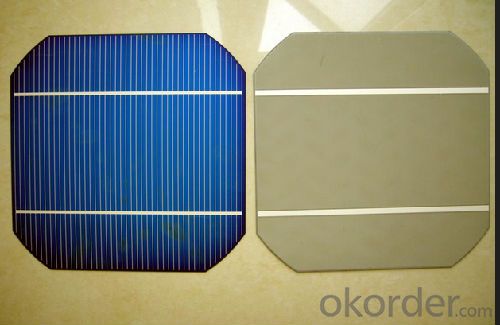
FAQ:How to PACK?
Typical package for one carton contains 1,200 cells.The cells are sealed in cell box every 100pcs.Gross weight peri unit carton shall be around 17.1Kg.
- Q: What is the average lifespan of a solar cell?
- The average lifespan of a solar cell is typically around 25 to 30 years.
- Q: Can solar cells be used on windows?
- Yes, solar cells can be used on windows.
- Q: What is the role of combiners in solar cell systems?
- The role of combiners in solar cell systems is to combine the electrical outputs from multiple solar panels into a single circuit, allowing for more efficient utilization of the generated power.
- Q: Can solar cells be used for cooking?
- Yes, solar cells can be used for cooking. Solar cookers are designed to capture and convert sunlight into heat energy, which can then be used for cooking food. These cookers utilize solar cells to generate electricity, which can power electric stoves or ovens for cooking. Additionally, some solar cookers directly convert sunlight into heat using reflective surfaces and insulation, eliminating the need for electricity altogether.
- Q: How do solar cells affect the electricity grid?
- Solar cells can have both positive and negative impacts on the electricity grid. On one hand, they can contribute to a more sustainable and renewable energy mix by generating clean electricity directly from sunlight. This reduces the need for fossil fuel-based power generation, leading to a decrease in greenhouse gas emissions and air pollution. Solar cells can also help diversify the energy sources in the grid, making it more resilient and less dependent on imported energy. On the other hand, the intermittent nature of solar power can pose challenges to the stability and reliability of the electricity grid. Since solar cells only generate electricity when the sun is shining, their output fluctuates throughout the day and is absent during nighttime. This can create imbalances between electricity supply and demand, as the grid needs to ensure a constant and reliable power supply to consumers. Additional measures, such as energy storage systems or backup power sources, may be required to address these intermittency issues and maintain grid stability. Overall, the integration of solar cells into the electricity grid presents opportunities for cleaner energy generation and reduced reliance on fossil fuels, but it also necessitates careful planning and the implementation of appropriate grid management strategies to mitigate potential challenges.
- Q: The history of solar cells
- The earliest lithium battery came from the great inventor Edison. As the chemical properties of lithium metal is very lively, making lithium metal processing, preservation, use, the environment is very high. Therefore, lithium batteries have not been applied for a long time.
- Q: Can solar cells be installed on sloped surfaces?
- Yes, solar cells can be installed on sloped surfaces. In fact, sloped surfaces can often be advantageous for solar panel installation as they allow for better sun exposure and increased energy generation.
- Q: What is the lifespan of a solar cell?
- The lifespan of a solar cell can vary depending on various factors such as the quality of the materials used, the manufacturing process, and the operating conditions. On average, most solar cells have a lifespan of around 25 to 30 years. However, with proper maintenance and care, some solar cells can continue to produce electricity for even longer periods.
- Q: What is the impact of snow accumulation on solar cells?
- Snow accumulation on solar cells can have a negative impact on their performance and efficiency. The layer of snow covering the cells prevents sunlight from reaching the surface, reducing the electricity generation capacity. Additionally, the weight of the snow can potentially damage the cells or the supporting structure. Regular cleaning or tilting of the panels can minimize the impact and ensure optimal solar energy production.
- Q: What is the impact of bird droppings or debris on solar cell performance?
- Bird droppings or debris can significantly impact the performance of solar cells. When bird droppings or debris accumulate on the surface of the solar panels, they can block sunlight from reaching the cells, reducing their efficiency. This shading effect can result in a decrease in electricity generation and overall output. Additionally, bird droppings contain corrosive substances that may damage the protective coatings on the solar panels, leading to long-term performance degradation. Therefore, regular cleaning and maintenance are essential to ensure optimal solar cell performance.
Send your message to us
Triple Junction Silicon Solar Cell 156mm*156mm with Different Efficiency
- Loading Port:
- China main port
- Payment Terms:
- TT or LC
- Min Order Qty:
- 100 m.t.
- Supply Capability:
- 10000000 m.t./month
OKorder Service Pledge
OKorder Financial Service
Similar products
Hot products
Hot Searches
Related keywords
